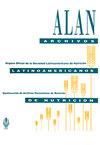蔓越莓粉胶囊作为营养建议,以提高酚类化合物的生物可及性
IF 0.3
4区 医学
Q4 NUTRITION & DIETETICS
引用次数: 0
摘要
蓝莓(Vaccinium corymbosum L.)中酚类化合物含量高,主要具有抗氧化、抗肥胖、抗炎等作用。Objetive。本研究的目的是评价体外胃肠道消化对蓝莓(胶囊)营养品配方(酚类化合物)的生物可及性和抗氧化活性的影响,并与新鲜蓝莓和粉蓝莓进行比较。材料和方法。对新鲜和冻干蓝莓的甲醇提取物进行了测定,并测定了其总酚、总黄酮、花青素含量和抗氧化活性。还进行了胃肠消化模拟试验,以评估样品中发现的酚类化合物的生物可及性。结果。结果表明,与新鲜蓝莓相比,粉末蓝莓和胶囊蓝莓的胃消化对酚类物质(42%和40%)、类黄酮(52%和33%)和花青素(45%和40%)的生物可及性更高。经过肠道消化后,蓝莓胶囊中的酚类物质(63%)和类黄酮(67%)的生物可及性高于蓝莓粉末。肠道消化条件对花青素的生物可及性有负面影响,无论评估的样品类型如何。结论。胃消化条件促进了粉状和胶囊蓝莓中酚类化合物的更大稳定性,这可能与维持这一水平的抗氧化环境有关。肠道消化条件特别影响新鲜和冻干蓝莓的酚类化合物,而不是胶囊,这可能表明胶囊保护酚类化合物不受碱性条件的影响。建议进一步研究剩余成分在肠道中的体外吸收及其对体内模型中氧化应激生物标志物的可能影响。本文章由计算机程序翻译,如有差异,请以英文原文为准。
Cápsulas de polvo de arándano como propuesta nutracéutica para mejorar la bioaccesibilidad de compuestos fenólicos
Blueberry (Vaccinium corymbosum L.) has a high content of phenolic compounds which have been studied mainly for their antioxidant, antiobesogenic, anti-inflammatory activity, among others. Objetive. The objective of the present study was to evaluate the effect of in vitro gastrointestinal digestion on the bioaccessibility of phenolic compounds and antioxidant activity of a nutraceutical formulation of blueberry (capsule), compared to fresh and powder blueberry. Materials and methods. Methanolic extracts of fresh and lyophilized blueberry were obtained and determined its total phenols, flavonoids, anthocyanins content, as well as antioxidant activity. A gastrointestinal digestion simulation test also was carried out to assess the bioaccessibility of the phenolic compounds found in samples. Results. The results showed that gastric digestion of powder and capsule blueberry promoted greater bioaccessibility of phenols (42% and 40%), flavonoids (52% and 33%) and anthocyanins (45% and 40%), compared to fresh blueberry digests. After intestinal digestion, the bioaccessibility of phenols (63%) and flavonoids (67%) was higher in the blueberry capsule compared to its powdered blueberry counterpart. The intestinal digestion conditions negatively affected the bioaccessibility of anthocyanins regardless of the type of sample evaluated. Conclusion. Gastric digestion conditions promote greater stability of phenolic compounds in powdered and capsule blueberries, which could be relevant for the maintenance of an antioxidant environment at this level. The intestinal digestion conditions particularly affected the phenolic compounds of fresh and lyophilized blueberry, but not the capsule, which may suggest that encapsulation protected the phenols present from alkaline conditions. Further studies on in vitro absorption of the remaining components in the intestine and their possible effects on oxidative stress biomarkers in in vivo models are suggested.
求助全文
通过发布文献求助,成功后即可免费获取论文全文。
去求助
来源期刊
CiteScore
0.50
自引率
0.00%
发文量
31
期刊介绍:
Archivos Latinoamericanos de Nutrición (ALAN) is the official publication of the Sociedad Latinoamericana de Nutición (SLAN), for the dissemination of knowledge in the fields of food and nutrition, principally throughout the American Hemisphere. Articles in Spanish, English, Portuguese and French are accepted, both from the Society members and from nonmembers, in the following categories: 1. General articles (critical scientific reviews); 2. Research articles (originals); 3. Papers in applied nutrition (analytical results from intervention programs and discussion of reconmendations of practical application), and 4. Letters to Editor (short comments of general interest or about scientific facts and results previously published in Archives).

 求助内容:
求助内容: 应助结果提醒方式:
应助结果提醒方式:


